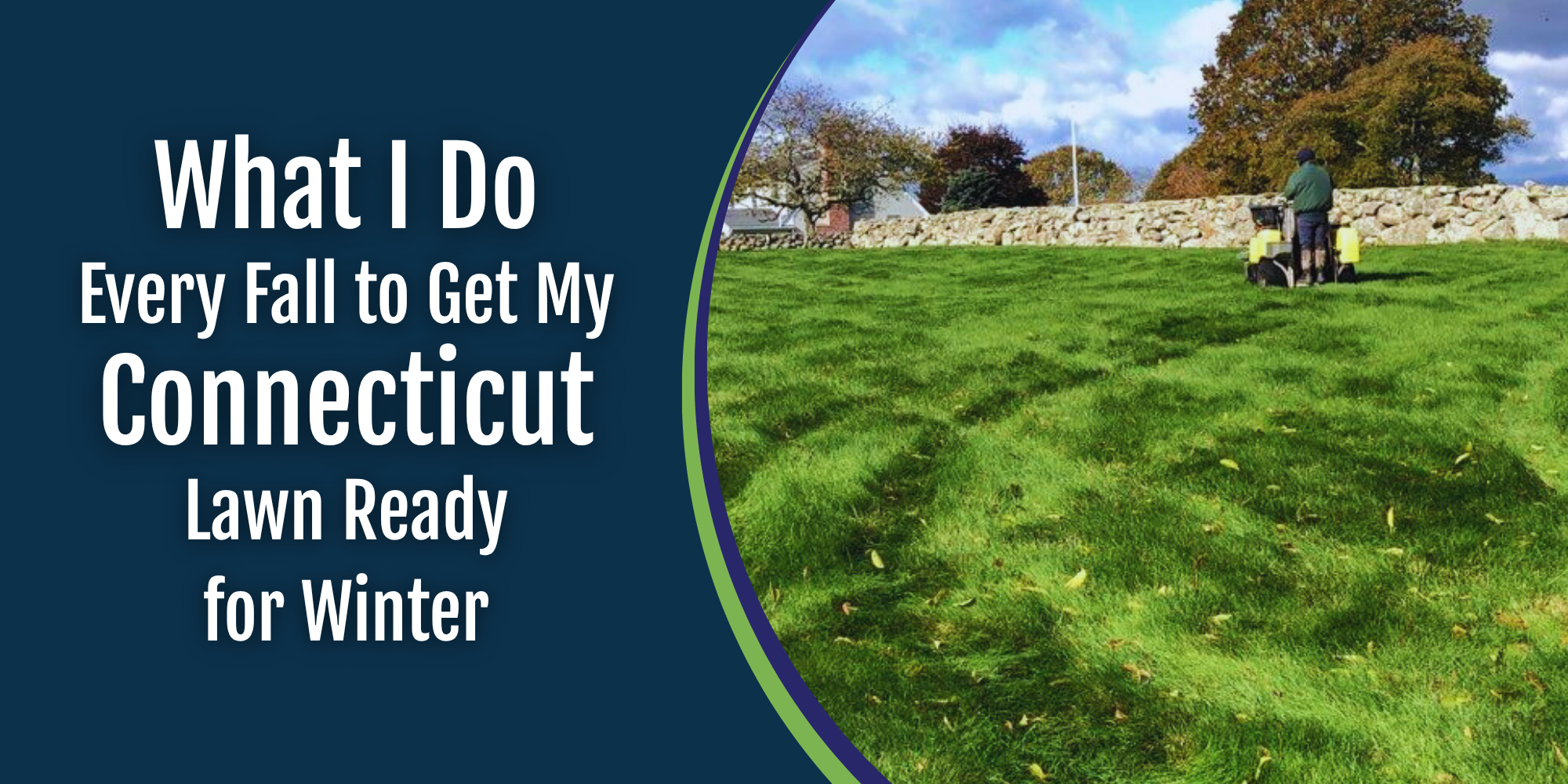
What I Do Every Fall to Get My Connecticut Lawn Ready for Winter
After 41 years working on Connecticut lawns, I can tell you that fall is hands down the most important season for your grass. It’s not just about raking leaves – it’s about undoing summer damage and setting yourself up for a strong spring.
We’re in the heart of fall now, and temperatures are finally cooperating. From our Madison location near the shore to our Norwich office inland, I’m seeing the same issues on lawns everywhere: thin spots, weeds moving in, grass that’s just struggling after another tough Connecticut summer. The heat, the humidity swings, those stretches without rain followed by downpours – it all takes a toll.
But here’s the good news – these October temperatures give us the perfect window to fix all that. The grass wants to recover right now, and if you do the right things over the next few weeks, you’ll be amazed at what your lawn looks like come spring.
I put together a video showing exactly what I do on my own property each fall. Let me walk you through it.
Why Fall Matters So Much for Connecticut Lawns
I’ve been doing this since 1983, serving everything from coastal properties in Madison and Clinton to inland yards in Norwich, Franklin, and Preston. Our Connecticut climate is unique – we get those brutal summers that stress the grass, then this narrow fall window where conditions are perfect for recovery.
The soil temperatures are still warm enough for root growth, but the cooler air means less disease pressure. And the grass itself is naturally programmed to bulk up this time of year before winter dormancy hits. Miss this window, and you’re fighting an uphill battle all next year.
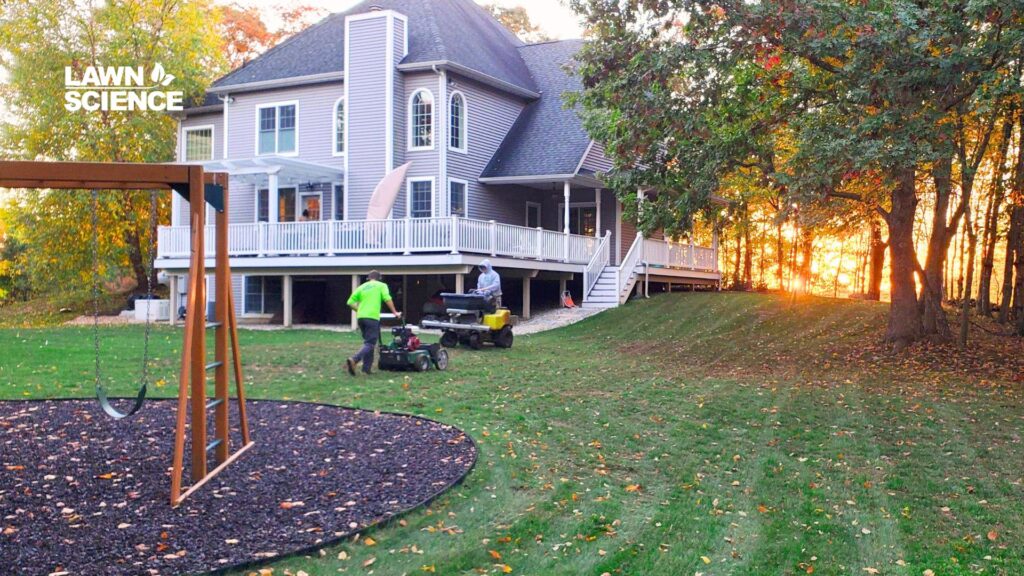
What I’m Doing Right Now in October
Evaluating and Feeding the Turf
The first thing I do is walk the lawn and really look at it. If it’s been six weeks since your last fertilizer application, you’ll probably notice the grass starting to look pale. That’s a clear sign it needs nitrogen.
I use ProPeat fertilizer about every six weeks. It’s got ammoniacal nitrogen that gives great green-up – doesn’t even have iron in it, but the color response is fantastic. Usually see results within three to five days. The key is timing that fall application while the grass is still actively growing so it can use those nutrients to recover from summer stress.
Addressing Soil Issues
This is where a lot of folks miss the boat. Your soil chemistry matters just as much as fertilizer, maybe more. I did soil testing back in spring, and even though my pH was acceptable, I know I need to stay on top of it with applications of dolomitic lime.
Here’s my advice – don’t guess about lime. Test your soil through UConn labs. Every Connecticut property is different. What works on sandy coastal soil in Madison won’t be the same as what’s needed on heavier inland soil in Norwich.
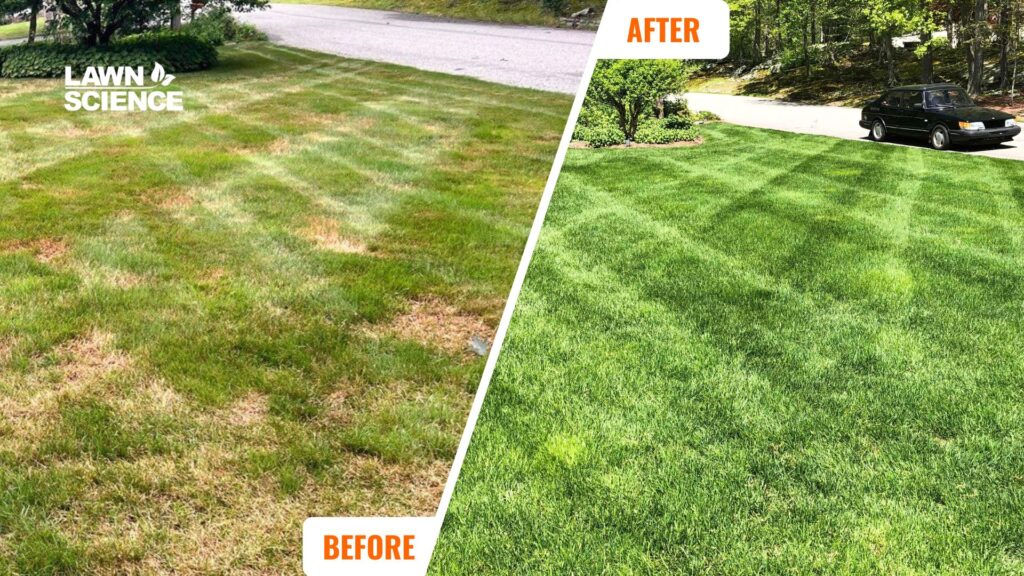
Boosting Potassium for Winter Hardiness
My soil test showed potassium running a little low. Potassium is huge for winter hardiness and disease resistance, so I put out some 0-0-50 sulfate of potash at about a pound per thousand square feet. I’d rather address it now than see problems come spring.
Dealing with Weeds While Conditions Are Right
October is perfect for weed control. With temperatures consistently in the low 80s or upper 70s, you can knock out weeds without stressing the grass. I’m hitting clover patches with herbicide right now while conditions are ideal.
Just keep in mind – if you’re planning to overseed, check the label on whatever weed control you use. Some products have waiting periods before you can seed.
My Biostimulant Program for Fall
I’m putting out biostimulants more consistently now – RGS and Air8, along with some sea kelp. The combination really pushes root growth, which is exactly what you want going into winter. Add in the sea kelp nutrients and you’re giving the grass everything it needs to bulk up below ground.
In a couple weeks I’ll follow up with humic acid and microgreens. The root development I’m seeing from this program is pretty impressive.
Adjusting My Fertilizer Strategy
Here’s something I’ve changed this year that’s working really well. I’m using a combination approach now – granular fertilizer every six weeks, then hitting it with liquid fertilizer right in the middle of that window.
So I’ll put down ProPeat one weekend, then three weeks later I’ll spray some 18-0-1 Green Punch. It’s not a ton of nitrogen, but it keeps that color going and maintains steady growth. I found this combination approach works better than going fully liquid or fully granular.
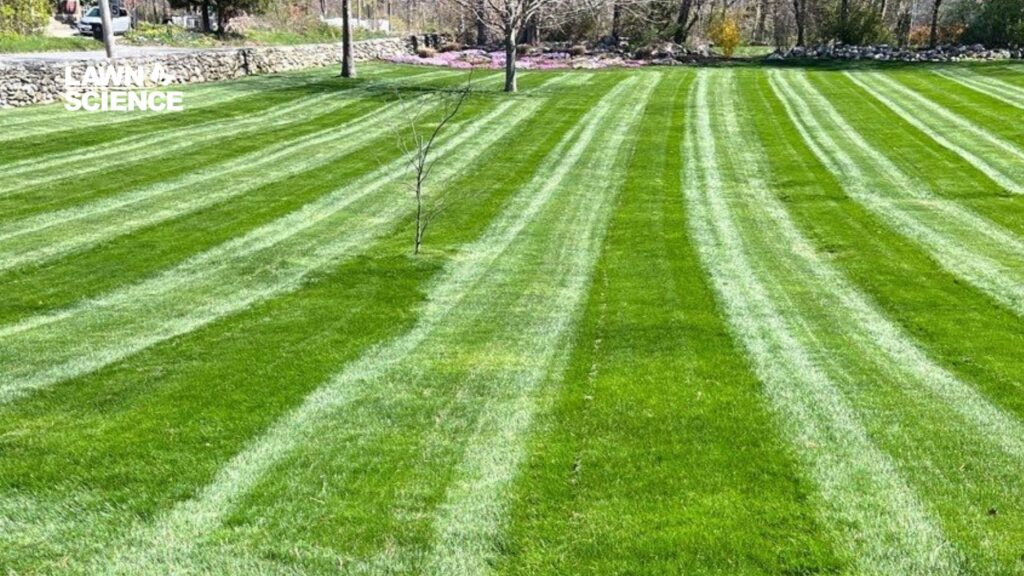
Watering Adjustments for October
As temperatures cool down, you don’t need to water as much. I’m already seeing heavy morning dew, and with nighttime temps in the upper 40s to 50s, the grass just doesn’t dry out like it did in summer.
I haven’t changed my frequency – still watering twice a week – but I’ve cut back the amount from three-quarters inch to about a half inch or just under. Still important to keep watering though, at least until you need to winterize your irrigation system around Thanksgiving.
What This All Adds Up To
Look, I know this might seem like a lot. But when you break it down, it’s really just a few key applications at the right times:
- Right Now (October): Fertilizer to recover from summer, address soil issues, boost potassium
- Next Few Weeks: Weed control while temps are moderate, continue biostimulants
- Early November: Final fertilizer before winter, prepare for dormancy
Get these basics right, and you’re setting yourself up for success. Your grass will go into winter strong and come out of it ready to grow.
A Few Connecticut-Specific Notes
After four decades working throughout eastern Connecticut, I can tell you that local conditions matter. Coastal properties around Madison and Clinton stay warmer longer in fall, so you can push some treatments later. Inland areas around Norwich and Franklin cool down faster, so timing needs to be adjusted.
That’s something we do with every customer – we inspect the property first, understand the soil type and microclimate, then customize the program accordingly.
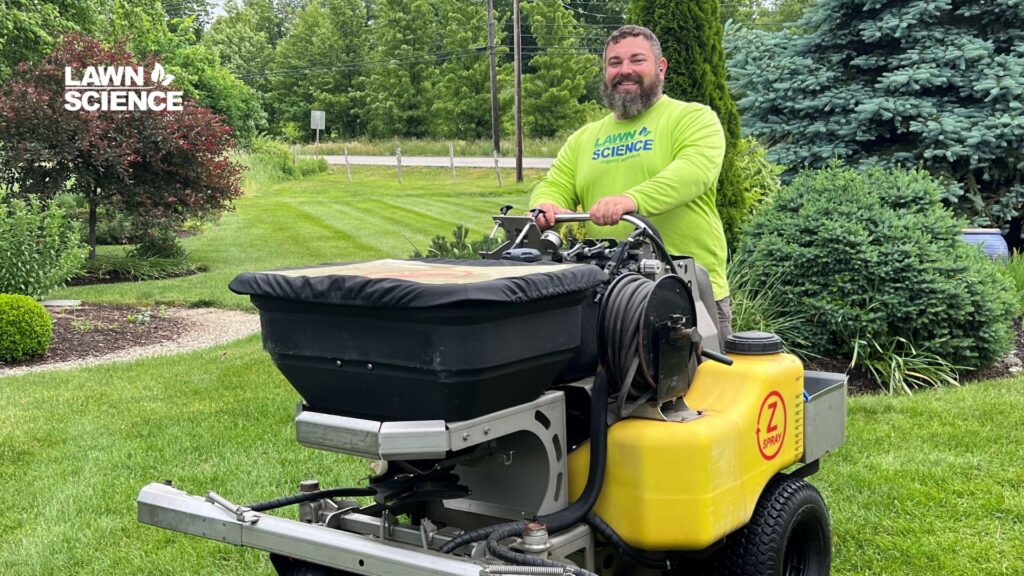
Don’t Let This October Window Pass You By
Here’s the bottom line – you’ve got maybe four to six weeks left to get this right. After that, the ground gets too cold, the grass stops growing, and you’re stuck waiting until spring to fix problems that could’ve been handled now.
I’ve seen it too many times over 41 years: homeowners who skip fall care end up spending twice as much next spring trying to play catch-up. Dead spots that could’ve been overseeded in September need full renovation in May. Soil pH that could’ve been corrected with fall lime becomes a major project. Weeds that could’ve been knocked out in October are thick carpets by April.
Here’s What We Can Do for Your Lawn This Fall:
- Complete soil analysis through UConn labs – no guessing, just science
- Properly timed fertilizer applications using safe, water-based treatments
- Strategic overseeding for bare and thin areas (if you haven’t done it yet)
- Weed control while conditions are perfect
- Late-season winterization to protect your investment through winter
We serve properties throughout eastern Connecticut from our Madison and Norwich locations. Over 3,000 satisfied customers trust us because we understand local soil conditions, timing, and the differences between coastal and inland properties. We’re not some national company applying cookie-cutter programs – we’re your neighbors who’ve been working Connecticut lawns since 1983.
Ready to Get Your Lawn on Track?
Give us a call or visit lawnscience.com to schedule your fall evaluation. We’ll inspect your property, test your soil through UConn labs, and put together a customized plan that makes sense for your specific situation. No charge for the consultation – we just want to see what you’re working with and give you honest recommendations.
Remember, we’ve been taking care of Connecticut lawns for over four decades, and we’re not going anywhere. When you work with us, you’re working with neighbors who have a real stake in keeping our communities beautiful.
The bottom line? Fall is your opportunity to set things right. Let’s not waste it.

